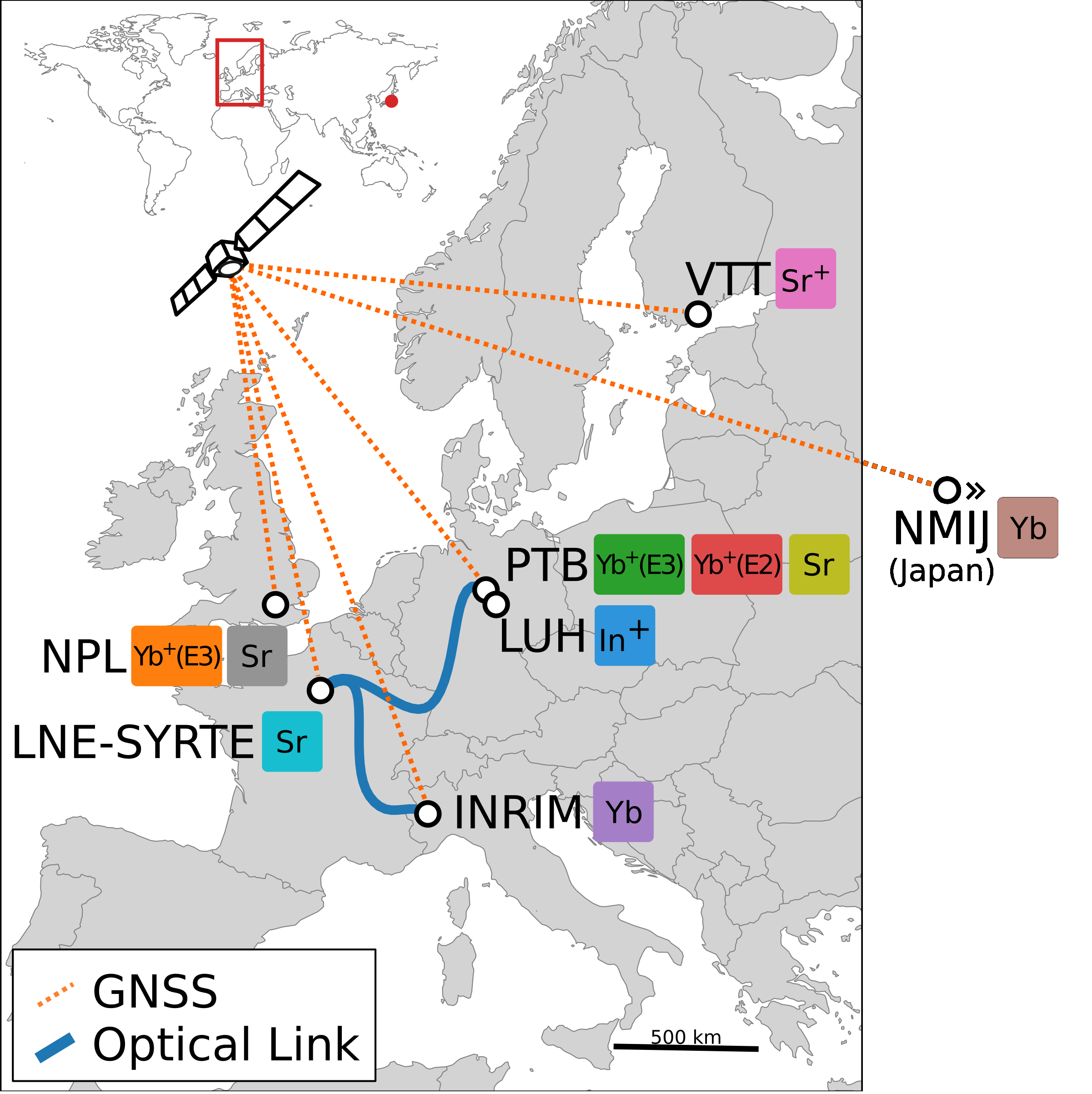Context and challenge
Optical atomic clocks represent the next frontier in time measurement, surpassing current standards by orders of magnitude in precision. Their capabilities open new scientific avenues such as chronometric geodesy—measuring altitude differences via clock rate shifts—and promise major improvements in space-time reference systems that underpin key scientific services and observations systems. But their unprecedented stability makes conventional comparison methods obsolete.
Method
To meet this challenge, researchers use fiber-optic links, where light travels reciprocally along the fiber, allowing ultra-precise comparisons across continental distances. In this groundbreaking collaborative work, ten optical clocks located in six countries were connected through these advanced networks and satellite links to perform simultaneous frequency comparisons.
Result
In total, 38 optical frequency ratios were measured, some for the first time, with record-low uncertainties. This marks the most extensive and precise comparison of optical clocks ever conducted. The results are a critical step toward building the world’s first optical time scales and adopting optical clocks as the future foundation of international timekeeping.
Perspectives
In multi-messenger astronomy, these future optical time scales will enable the detection of tiny timing differences between the arrivals of different messengers observed at distant sites. The ability to generate and distribute these new time and frequency references will allow dynamic mapping of Earth’s gravity field through relativistic geodesy and will enhance the precision of VLBI observations.
Legend : Map of the atomic clock network. The names of the various inter-comparison clocks represent the atom or ion used.
See the press release and the article.



